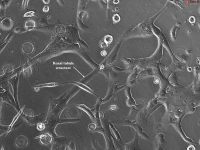Microfluorometric Measurement of the Formation of All-Trans-Retinol in the Outer Segments of Single Isolated Vertebrate Photoreceptors
互联网
互联网
相关产品推荐

JC-1,47729-63-5,A cationic, fluorescent, carbocyanine dye that can be used as a ratiometric indicator of mitochondrial potential δΨm in cells, tissues, and isolated mitochondria.,阿拉丁
¥3987.90

3D Renal Tubule Formation Kit
$921

oprP/oprP蛋白Recombinant Pseudomonas aeruginosa Porin P (oprP)重组蛋白Outer membrane protein D1蛋白
¥2328

Recombinant-Bovine-Retinol-dehydrogenase-8RDH8Retinol dehydrogenase 8 EC= 1.1.1.300 Alternative name(s): Photoreceptor outer segment all-trans retinol dehydrogenase
¥11550

4-(trans-4'-n-Propylcyclohexyl)-cyclohexanone
¥30

